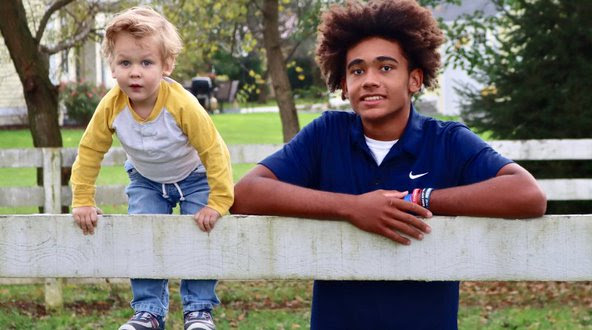This past week I wrote to you about setting boundaries with our children. In my blog, I wrote about the importance of boundaries for the emotional development of children. I also wrote to you about my own struggles in setting boundaries as a mama. One of the main reasons I struggle with setting boundaries for my own children is the (out)bursts that come with it.
It just so happens that as a clinician one of my primary areas of specialization is problem behaviors (the bursts). It’s what I went to graduate school to study over a decade ago. Over 10 years later and I can tell you the science of reducing problematic behaviors hasn’t changed. My own journey applying clinical skills at home, of course, has not (well, not totally). Today I’d like to write to you about both.
ABA & Bursts
Let’s start at the beginning with ‘burst science.’ Applied Behavior Analysis teaches us that social behaviors, both positive and negative, can be broken into units that can be studied. In studying units of behavior, BCBAs are able to identify the function of behaviors (why behaviors occur) and missing skills in the child they are studying. When it comes to reducing problem behaviors, behavior analysts are looking for why the behavior is occurring. This involves looking at what is happening before the behavior and what happens after the behavior.
While studying the environment before bursts occur, BCBAs look for a deficit in the child’s environment. What are they missing? Studying environments after bursts allow BCBAs to see if the child’s problem behaviors filled the deficit. If they did, the child is successfully using the problem behavior to get their needs met. This means the problem behaviors are being reinforced and will continue to occur. Magic I’m telling you. Magic.
You see, by studying what a child is seeking in a specific environment you can create interventions that fill the child up with what they are seeking to immediately decrease the problem behaviors. This isn’t a long-term solution, but it creates a short-term solution to make the days easier for the child and their families. While the child is being satiated BCBAs work on teaching new skills surrounding the child’s needs. This always looks like teaching functional communication skills, how to ask for exactly what you need.
Sometimes teaching specific skills can look like teaching patience and tolerance to ‘no’ when what the child wants isn’t good for them to have all the time. For example, if a child is throwing tantrums to get access to candy it’s damaging to have non-contingent candy all of the time. But if a child is tantruming for positive attention, we can fill them up without having to teach tolerance to no. Though we might have to teach waiting because sometimes mama (or papa) is busy.
The key to this remedy is to also remove reinforcement when a child is using their problem behavior to get their needs/desires met. If, in the scenarios above, the BCBA is providing candy (one piece) every 30 minutes and within 15 minutes the child hits to get access to the candy the BCBA cannot give the child the candy. If they do they will reinforce the hitting and take the motivation away from using words. It is here, in this little sweet spot of the behavior intervention, that bursts occur. Let’s talk about that.
Why Do Bursts Occur?
Underneath the bursts for children (and adults… more on that later) is fear that their needs/desires won’t be met. The bursts occur because, in the child’s mind, that very thing they want could become unattainable, their need won’t be met, and they will have to experience negative emotions. Dealing with both the fear of a need/desire not being met alongside psychologically negative emotions is tough stuff for a child. This right here? This is the hard part for parents and the sweet spot for teaching emotional resilience and intelligence.
As a mama, I know firsthand how easy it is to give in. To not want to deal with the temper tantrum, the screaming, and the crying. We are human beings and crying children is not comfortable. When we give in as parents at a given moment it provides immediate relief to ourselves and our children. It also perpetuates the very behaviors we don’t want to see more of and does not teach our children how to deal with the big emotions.
About a year ago Henry and I were at Dametrius’s football game and Henry wanted candy from the concession stand. I had packed snacks and knew sugar was on the menu later so I didn’t want him to have extra candy. I leaned down and told my little son, “no, not now we’ll have dessert at dinner”. Of course, in public, a full-on tantrum occurred. At that moment I thought how perfectly aligned this example was. You see at that moment I could have made a concession at the concession stand by just giving in. If I gave in Henry would happily watch the game and I wouldn’t have to be teaching Henry to breathe and tell me how he feels. But giving in also meant teaching my son to numb his emotions with food and that screaming works. So I stood my ground and worked with Henry.
You see under the bursts, as we are teaching boundaries. As children burst, their hearts need to know they can ride through negative emotions and still be safe on the other side. That nothing bad comes from feelings and that needs can be met in new ways. To me, as a clinician, I know that working through the bursts creates long-lasting, positive, change. As a mama, teaching my children to ride what is underneath the bursts is more valuable than any concession I could make at any given moment.
Xoxo,
Jessie


